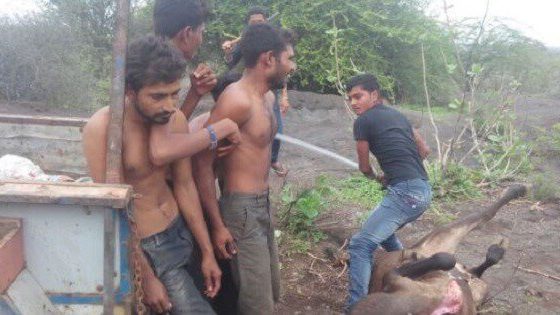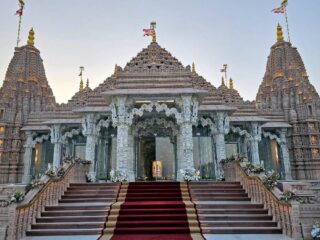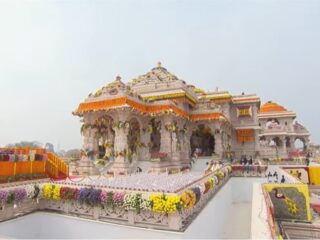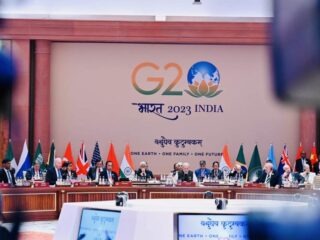In Part – I we examined the instances of oppression and marginalization of the Dalits which is similar to the African-Americans in US if not worse. However there are no protests in India similar to the outrage witnessed in US. There were thousands of protest rallies in the 2,000 cities of the US (Burch, Cai, Gianordoli, McCarthy, & Patel, 2020) in every nook and corner of America. George Floyd incident was preceded by shooting down of an unarmed 25 year old African-American Ahmaud Arbery by a white racist resident in Georgia calling him “fucking nigger” in February 2020. Breonna Taylor was shot dead by Louiville Metro Police Department Officers in March 2020. The death of an African-American George Floyd, after an encounter with a white police officer in Minneapolis, who pressed his left knee on his neck triggered off the demonstrations and protests. The protest demonstrations were joined by white Americans as well. The police chief of Houston, Texas, told the President of the US to “keep your mouth shut” when Trump asked the Governor to dominate the protestors. Often police officers marched with the demonstrators. Some would kneel down expressing their shame at the treatment given to George Floyd.
While the violence and oppression of the Dalits and Muslims in India is no less than the African-Americans in the US, why there is no massive outrage among non-Dalits and the wide scale protests witnessed on the issue of custodial death of George Floyd?
Although there have been some protests against the atrocities on Dalits, they have been localized, smaller in scale and with absence of any significant participation of non-Dalits. Here we recall three instances which triggered off protests against Dalit atrocities in the recent past. First, the Khairlanji massacre in 2006. All the members of the Bhootmange family, except one, were brutally murdered by upper caste Kunbis. Mother and daughter were raped before killing them. The massacre was unleashed due to the refusal of the Bhootmanges to part with their life’s resource – their agricultural land for the construction of a road that would have benefitted the upper caste. Enraged by a police complaint lodged the previous day by Surekha over the land dispute, the perpetrators of the massacre dragged out Surekha Bhaiyyalal Bhotmange and two of her sons and daughter, paraded naked in the village, sexually abused them and then hacked them to death. This triggered off the protests in Vidarbha and other regions of Maharashtra – to begin with at local level. The police delayed in registering the FIR of the incident. This was followed by a series of local protests in small towns wherever Dalit organizations were active. Series of localized protests refused to die down, spreading to other regions of Maharashtra and even outside Maharashtra. There was a demonstration in Mumbai as well.
Worried that the protests would spread like a wild fire and present an opportunity to Dalit organizations to mobilize on larger scale, the state intervened and registered FIR to pacify the Dalits. However, unlike in the George Floyd case, the participation of non-Dalits in the demonstrations was very marginal at best if not entirely absent. Even Muslims who face similar violence and marginalization chose to stay aloof.
In order to diffuse and pre-empt the Dalit mobilization, the state undertook an improper investigation, which affected the case adversely. The final conviction of the accused was secured under ordinary law and not under the stringent Scheduled Castes and Scheduled Tribes (Prevention of Atrocities) Act, 1989 as if it were like any other routine murder without any caste angle (The Hindu , 2016). The Bombay High Court commuted the death sentence awarded by the trial court to a sentence of 25 years of rigorous imprisonment.
There was another round of protests by Dalits in March 2018 when the Supreme Court of India read down the Scheduled Castes and Scheduled Tribes (Prevention of Atrocities) Act, requiring a mandatory preliminary enquiry before registering any FIR under the Act. It also ruled that public servants would not be prosecuted without the approval of the appointing authority. Once again there was large number of scattered protests worrying the Dalit political leaders supporting the Government. The Supreme Court reconsidered and overturned its earlier verdict.
The third protest in Pune was massive mobilization of the Dalit organizations against their oppression in general and not a reaction to any particular incident. The meeting, called ‘Elgar Parishad’ was strategically timed on the eve of 1st January 2018, when Dalits were expected to gather in large numbers at the Memorial in Bhima Koregaon to the Mahar (a Dalit caste) Regiment of British army which defeated the army of Peshwa (Brahmin rulers) in the year 1818. Dalits in Maharashtra gather in large numbers every year on 1st January to draw inspiration from the Memorial and pay respects to the soldiers of Mahar Regiment who fought valiantly. 2018 was 2nd centenary year and large numbers of Dalits were expected to gather at the Memorial. Elgar Parishad in which about 35,000 people gathered in Pune, highlighted the oppression of Dalits on 31st December 2017. There were riots in Vadhu Budruk, a village near Bhima Koregaon, in which members of upper caste attacked the Dalits on the previous day. Blaming the riots on the Elgar Parishad, massive repression was mounted on those who had addressed the Parishad. Alleging that the Parishad was organized by banned Maoist Party, police indiscriminately arrested leading intellectuals and civil liberties activists of the country holding dissenting and critical views on the government and its authoritarian policies like Anand Teltumbde, Gautam Navlakha, Adv. Sudha Bhardwaj and others. The aforesaid had not even attended the Elgar Parishad but they were unbelievably linked to the banned Maoist Party. The arrested public intellectuals merely gave voice to the social consciousness of the society and were ruthlessly silenced by implicating them in false cases and invoking stringent charges under draconian laws against them. In this atmosphere of fear, suppression and terror, do we hear the sane voices of protest and justice, quite literally and figuratively claiming “I can’t breath”, like George Floyd couldn’t, under the weight of the knee of the ‘state’ on his neck. Dissent is crushed with a heavy hand. However, there was no outrage against the implication of public intellectuals in false cases.
No outrage
Why there is less awareness in India that injustice anywhere is threat to justice everywhere, and denial of rights to any section is a threat to democratic rights of every citizen? We offer only some loud thinking on the lack of outrage against the atrocities on Dalits and Muslims in India among the non-Dalits and non-Muslims.
Graded inequality
Unlike the US, there is graded inequality in India as analyzed by Dr. Babasaheb Ambedkar. There are four hierarchically structured varnas and hundreds of hierarchically structured castes within each varna. Even within the Dalits, one caste considers itself above another Dalit caste. The oppressed are also deeply divided. Dr. Babasaheb would say this is not division of labour as apologists of caste system would justify, this is division of labourers. There is a psychological solace that though s/he is Dalit, however, s/he is sabove some other caste. The pride of being higher than some other caste blunts the feeling of absolute marginalization, and makes their sufferings a wee bit more bearable. Except the lowest of the Dalit caste, others may see some stake in perpetuating the caste system. This graded inequality also triggers off a competitions to claim a higher position in the caste hierarchy rather than seek complete liberation of from the yoke of caste system itself. The secular state of India has also further divided the OBCs and the Dalits into backward, most backward and extremely backward and sub divided the SC and the OBC quotas accordingly.
Again, unlike the US, the inequalities are sanctioned by religion. The Brahmanical notion of religion and graded inequalities is based on the notion of purity and pollution. More the labour involved in the caste based occuppations, lesser the privilege s/he enjoys. The castes that are required to plough the land, the potters, the carpenters, the weavers and other manual labourers only have duties towards the privileged upper castes to render services. Certain work is considered impure like the manual scavenging, sweeping and cleaning, skinning dead cow and extracting leather, disposing off dead animals etc., and they are considered untouchables as they do impure work.
The whole religious notion of rebirth into higher or lower castes depending on how well the person served the upper castes by performing his caste based duties is antithetical to any notion of equality, human rights, citizenship and democracy. The oppressed themselves start accepting their position, status and oppression under the weight of the religion.
The Hindutva political ideology has further introduced the concept of “foreign religions”. Those religions that accept the concept of equality, at least in their theology, are termed as foreign religions on the criteria that their holy land is outside India. The adherents of Islam and Christianity are termed as foreigners and called “mlechhas” or impure people. The Dalit caste which may be lowliest in the caste hierarchy is made to feel superior to the “mlechhas”. There are enough studies that have underscored the participation of Dalits in communal riots targeting the Muslims.
The followers of Hindutva have long been working among Dalits and propagating that the Muslim rulers were their oppressors and not the upper castes. They distribute literature and pamphlets lucidly written for the less educated and school dropouts with appropriate images and illustrations with imagined history wherein the Muslim rulers are shown as those who demolished their temples and outraged modesty of the Dalit women. These pamphlets are distributed alongside some minor facility they might be providing to make initial contact – funding their cultural activity, running an ill equipped gymnasium for them or some such minor help. The hatred against the Muslim community is thus internalised among the section that is in contact with the workers of Hindutva organisations. We have met Dalit youth who were influenced by such pamphlets and were in contact with Hindutva workers. The Muslims are portrayed as the “common enemies” who brought the downfall of the golden era of ancient India, covering up the fact that the ancient India was replete with a rigid caste based oppression of the Dalits. Over the years, the Hindutva supremacist organizations have displayed tokenism towards the Dalits by attempting to appropriate Ambedkar and make him and object of worship sans his life mission. The Dalits are co-opted into the same discriminating institution of religion which kept them at the margins for centuries by creating an illusion of inclusion into the fold. Dalits are mobilized to join the Hindutva organizations and misused as foot soldiers in communal violence by convincing them that the Muslims are anti-national, terrorists and the larger threat to Dalits and the Hindu society of which they are a part.
The caste system has followed into the Muslim and Christian community. The social hierarchy of caste is retained within these communities. The Ashraf or upper caste convert to Muslim community feel that they are superior and nurture same feelings towards the Dalits among their community as well as Hindu community. In a Dalit-Muslim dialogue organized by the Centre for Study of Society and Secularism in Ahmedabad after the 2002 riots in Gujarat in which one of us was present, one Dalit activist pointed out the fact that even Muslim business estbishments and households treat the Dalits in the same way as the Hindu upper caste do.
This graded inequality divides all the oppressed. Horizontal unity of the oppressed and marginalized then seems to be a distant possibility. Dalits do no protest on streets when there is mob lynching and communal riots and Muslims do join the protests when the Dalits are treated the way they are treated.
The Civil Society of the other marginalised sections:
Indian metropolitan cities have a fairly strong trade union movement with its usual ups and downs. Mumbai once had a very strong left trade union movement since the Biritish colonial period in the textile, pharmaceutical, engineering, automobile and other industries and service sectors like banking and insurance sector. However, Dalits were by and large excluded from the organized industrial sector. Their presence was marginal and that too in lowest paid jobs like sweeping etc. Caste hierarchies and hierarchical attitudes more or less prevailed on the floor of the factories as well. The union leaders of the leftist trade unions did not personally treat the Dalits as untouchabless. However the demands of the Dalits were not voiced as powerfully and they rarely made to the leadership of the Union. The left unions did not address cultural issues like caste and communalism within their membership, which according to them was part of the superstructure. They believed that it was enough to bring together workers from varied castes and communities in common struggle and the caste and communal feelings would melt away and comradeship would develop on its own. They believed that culture would change after the socialist revolution. As a result there was very little engagement with the existing feudal culture. There was very little ideological war against the caste system and there was no education of the upper caste workers on the necessity to struggle against caste system. The workers would hold the red flag inside the factories but when they returned to their neighbourhoods, they would be members and activists of Hindutva parties. After the 1992-93 anti-Muslim communal riots, the Hindu workers stopped the Muslim workers at the factory gates from resuming their work. Trade unions were reluctant to mobilize all their members and run a campaign against communalism and Hindutva ideology.
Similarly, feminists from the Dalit and minority community felt that the main stream feminist movement did not address some of their issues. They formed their own feminist organisations and were accused of splitting the feminist movement. The presence of the Dalits and minorities in the leadership of the civil society is much less and their issues and voices are consequently ignored.
The upper caste leadership of the civil society like the trade unions, professional unions, human rights organisations, feminist organisations which struggle on democratic issues feel that raising the issues of caste and communalism will weaken their movement and the unity of the sections they are organizing. On the other hand when the Dalits and minorities form their civil society organisations to address their issues, it is seen as splitting the movement. As a result the empathy of the upper caste leadership for these causes is much less than what it should be. This may be one factor why the outrage in India is not what it should be.
A small section of Dalit movement has also become extremely sectarian and sees everything through the prism of caste. Exclusive emphasis on their caste identity produces feeling of victimhood and leads to strong exclusive caste based networks which make them feel secure within their cocoons but does not address other common issues of all marginalised sectionss. Dr. Babasaheb becomes their exclusive “property” and their answer for all their problems, almost deifying him. For all practical purposes, they see the world as Dalits v/s the rest. They want more share for Dalits within the existing structures and have no vision of an alternative egalitarian system that would include all sections and serve the cause of social justice. They are militant and confrontationist for a short duration but often get co-opted within the system by the ruling elite as the militancy cannot be sustained for long periods. Ramdas Athavale, Udit Raj, Ram Vilas Paswan and Mayawati are some examples of co-opted leaders. While the upper caste ruling elite control the entire budget, these co-opted leaders get some crumbs of SC/ST welfare budget too govern and satisfy their followers. Co-option within the system is one weapon in the hands of the ruling elite to blunt the consciousness for an alternative egalitarian system.
There is a similar small section of Ashraf Muslims propounding adherence to Sunni puritanical practices of Salafi Islam within the Muslim community which is extremely intolerant of any reasonable measures that may be required in accordance with the Constitutional provisions to codify or regulate religious practices which ensure gender justice or general welfare of all Indian citizens. They shun legislations pertaining to family affairs as interference in their religious affairs and at times react violently. They want the community to return to some Arabicized culture in the name of puritanical Islamic practices. Muslim leadership often raises emotional religio-cultural issues which naturally do not invoke empathy of wider section, particularly those religious practices that discriminate and marginalize Muslim women. The section of Muslim political leaders too have often shown readiness to the co-opted for small and petty benefits. They do not struggle on issues of livelihood and education.
Protests can have two objectives – 1) To expression of outrage on certain policy measure, inhuman action or atrocity or behaviour and venting once pent up feelings. Such a protest demonstration could at times turn violent depending on the turnout of the protestors and the intensity of the outrage felt. After such an expression of outrage to the world at large and exhibition of the numerical strength of the people who assembled to condemn the action, people feel fairly satisfied and do not intend to pursue any further collective action. Of course the normal work in the area of transforming the society to seek the larger goal of social justice would continue but not through the collective of the protestors assembled. A few off hand examples of public protests with this objective are the protests of Muslims on Dutch cartoons portraying Prophet Mohammed or when Dr. Babasaheb’s busts are garlanded with shoes or certain atrocities have been committed by state or noon-state actors.
2) To invoke the empathy of policy makers or perpetrators of the atrocities as well as of those choosing to remain silent and through their silence indirectly encouraging the atrocity, or action or behaviour or policy measure in question. The protests may also be in favour of a new policy measure propounded by the protestors and the protest is to gather support for such policy measures. The protests in this category essentially have to be non-violent and even resulting in the sufferings of the protestors when state or non-state actors attack them. A few off hand examples of this kind of protests are Muslims opposing the Triple Talaq Bill or Dalit organizations opposing the Supreme Court judgment reading down the provisions of the Atrocities Act or the protests of LGBTQIA communities or the Adivasis under NBA opposing Sardar Sarovar Dam or even the JP Movement when protestors were demonstrating in Bihar with their hands tied behind them expecting the police to attack them or the workers of closed textile mills in Mumbai in the 1990s.
In India we often witness protests with the first objective which are less likely to attract empathy from wider section. We need to have more frequent protests with the second objective and innovative methods. We need to mobilize more on concrete policy measures that would make governance and the state more accountable, inclusive and participatory democracy a new social contract that would work more for the most marginalised and reduce socio-economic inequalities and embrace cultural diversity and political pluralism. Mobilization around such concrete policy measures and demands would gather all marginalized sections. As such a shared vision is not popular, sectional mobilizations with the first objective do not invoke general empathy of all sections.
Finally we would humbly submit that what we need is all the civil society movements for egalitarian and democratic culture and politics to come together and engage with each other on a regular basis to develop a larger and comprehensive alternative vision that will be all inclusive, adhere to social justice; is deeply democratic, with accountable governance and allows space for participation of all citizens; embracing diversity and non-negotiable gender equality, against perpetuation of caste based identities and one that drastically brings down class inequalities. Such a vision will have to be based on values of humanism, empathy and love for all human beings and also environment. We need to build a horizontal unity of all the oppressed and marginalized sections of the society. We would have to build bridges between the organisations that represent the interests of workers, peasants feminists and organizations that stand for cultural diversity. The organisations that struggle for democratic causes will have to undertake massive awareness and educational campaigns for a democratic culture and attitudes respecting diversity, equality, human dignity and freedoms.
We have ample cultural and ideological resources to undertake this educational and awareness building campaigns along with struggles for equality and inclusive society. We have cultural resources from non-Brahmanical or Shramanic traditions – the Lokayat philosophy, Buddhism, Sikhism, Jain philosophy, Islam, Christianity, Sarna and adivasi world views. We have a history of peaceful co-existence for over 20 centuries and rich interaction between various cultures which have enriched the diversity and composite culture. We have the Bhakti Saints like Kabir, Tukaram, Janabai, Muktabai, Rai Dass, Tulsi Das, Meera, Basvanna, Narayan Guru and many others. We have Sufi saints like Bulle Shah, Baba Farid and Nizamuddin Auliya. We have political thinkers and leaders right from Dr. Babasaheb Ambedkar, Gandhiji, Periyar, Maulana Shibli Nomani, Maulana Azad, Ram Manohar Lohia, Madhu Limaye, Jaiprakash Narayan and many others. We have experience of working class movements, peasant movements, feminist movements, social justice movements and environmental movements as our common heritage. We do not lack resources; we lack the will and the wisdom to build this horizontal unity for a democratic India.







